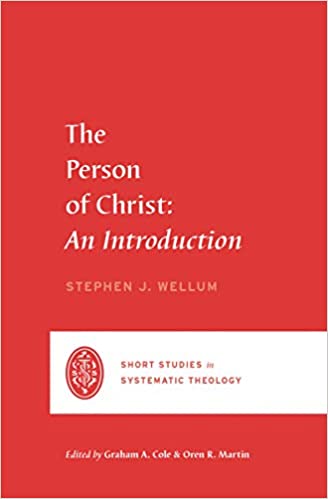A Book Review from Books at a Glance
by Ryan M. McGraw
The person of Christ is central to Christianity. Yet many Christians devote more attention to what he did than to who he is. However, things were reversed in the early church. Devoting primary attention to Christ’s two natures in one person, his work fell into place more gradually. This is right and good since we cannot understand Christ’s work in the gospel without understanding Christ himself as the foundation of the gospel. This short book is a solid introduction to who Jesus is, both as the eternal Son of God, and the Son of God incarnate. It is a useful guide to the core issues surrounding Christology.
Wellum divides his work broadly into biblical foundations, theological formulation, and theological summary, corresponding to who, how, and why Jesus is (15). The first four chapters establish who Jesus is in Scripture terms, stressing the gradual revelation of him in the biblical storyline, Jesus’ testimony to himself, and the larger witness of the New Testament. Comprised of three chapters, the second section addresses the path to Chalcedonian Christology, its aftermath, and current challenges to orthodox Christology.
The two final chapters summarize Christology by focusing on God incarnate and the centrality of Christ in Christian faith and practice. The author devotes significant attention to modern challenges to classic Christology, focusing particularly on forms of “kenotic” Christology, which posit the idea that Christ either lost or limited some or all of his divine attributes. Wellum’s presentation of the doctrine of Christ is biblically grounded, historically informed, and well-balanced.
This reviewer has at least one quibble with this excellent work. Referring to God’s “covenantal character” (39), as Wellum does in passing, can prove to be misleading. The eternal divine relations in the Trinity are personal subsistences inherent to who God is; they are not covenantal relationships. The Triune God’s plan of redemption is covenantal and eternal, but we must avoid the idea of importing covenant into God’s eternal being. Triunity is not a covenantal construct, but who God is determines the nature of his works in covenant. This applies both to the eternal covenant of redemption between Father and Son, with the Spirit as promised gift, as well as to the covenant of grace in which the Father calls the elect to union with Christ by the Spirit. Covenant reflects God’s Triunity, but covenant does not constitute God’s Triunity. This point is worth singling out, even if the author mentions it briefly since it has become a common point in modern theology.
As Wellum notes well, “Christological formulation is not easy, yet it’s our highest calling as Christians” (144). Knowing Christ, together with knowing the Trinity, is essential to biblical Christianity. In a time in which most believers can say more about what Jesus does for them rather than who Jesus is, works like this one are timely. Christ is the sum of the gospel and knowing the right God through him is eternal life (Jn. 17:3). Digesting this book will help reorient the church towards its center as readers grasp more fully why both the authors of the New Testament and the early Christian church placed so much stress on the Trinity and the incarnation.
Ryan M. McGraw
Greenville Presbyterian Theological Seminary
